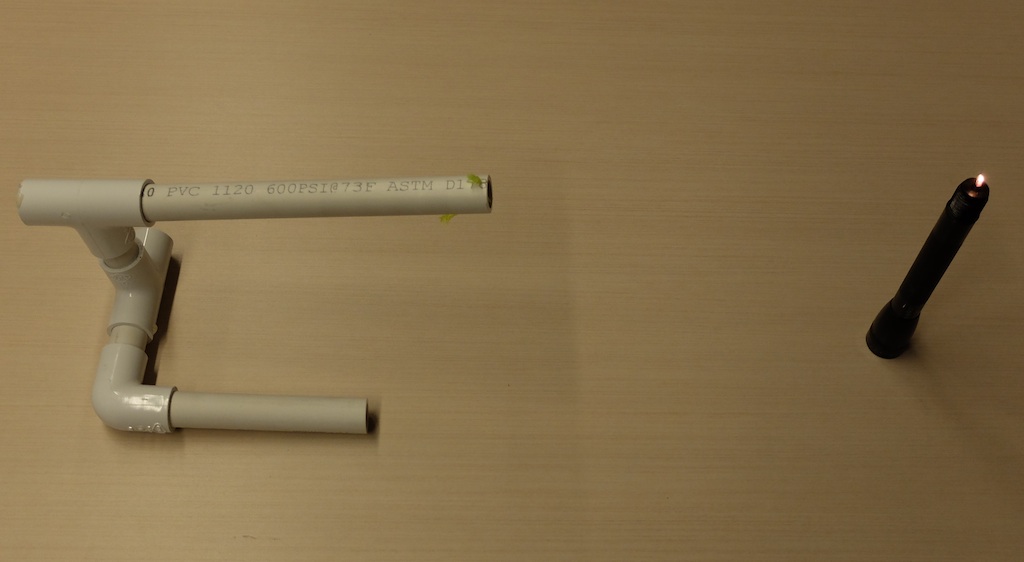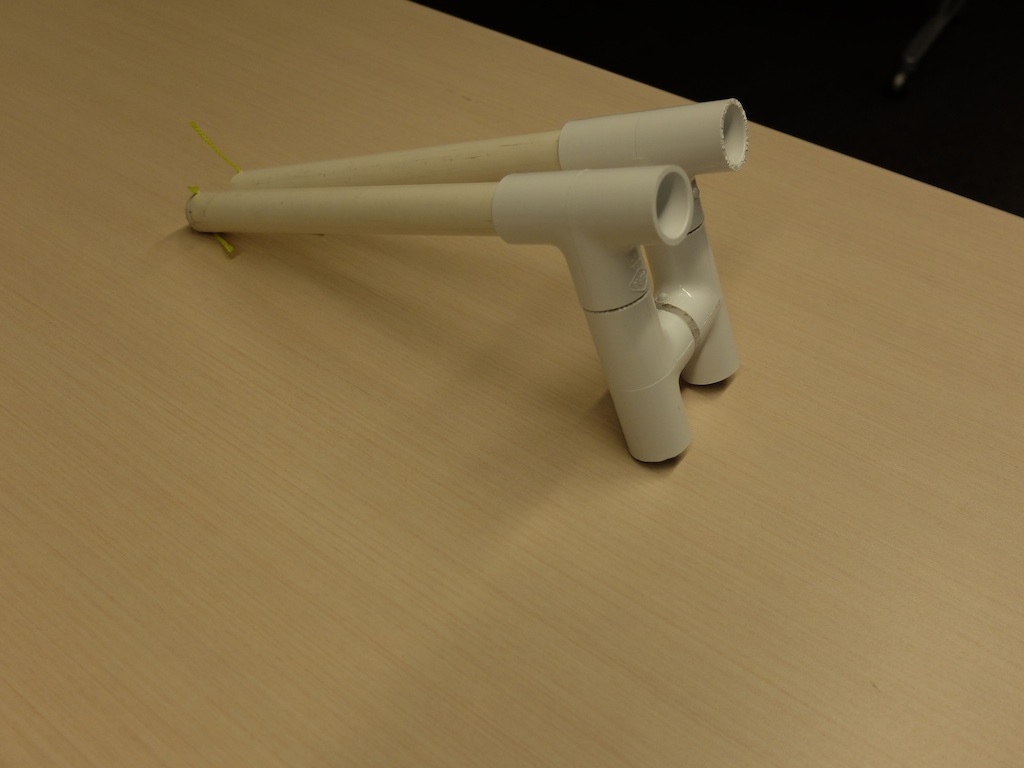
Image Sighting Tubes

Introduction
Use a PVC tube to sight an image, and thus find its location.
Materials
all materials use 1/2 inch schedule 40 PVC tubes and connectors
1 PVC tube 8 inches (20 cm)
1 PVC tube 5 inches (12.5 cm)
2 PVC tubes 2 inches (5 cm)
2 T-shaped connectors
1 90 degree angle connector
String
hacksaw
Assembly
Use the hacksaw to cut a slit across the middle of one end of the 8 inch PVC tube and insert a string in this slit.
Assemble the pieces as shown.
To Do and Notice
Find an object or an image.
Look through the tube and align the string with the object.
The tube is now pointing toward the object or image.
Have someone use a second tube to sight the object or image. Where the lines going along the central axis of each tube cross is the location of the object or image.
Going Further
Once you get the skill of sighting through the tube, you can add an end cap to a 2 inch tube inserted into the eye end.
Drill a 1/4 inch diameter hole in the center of this end cap to better align the viewing eyes.
You can also build a viewer that lets you look though two eyes at once.


The viewer is made from 1/2 inch PVC schedule 40
2 tubes 8 inches
3 tubes 2 inches
4 T shaped connectors
The T shaped connectors that join the two tubes together must have 1/2 inch cut off the stem of the T to allow the tubes to come close enough together so that normal human eyes can look into them at the same time. The interocular spacing can be adjusted by sliding the tubes together or apart.
Some people have to blink back and forth from one eye to the other to get both tubes aligned with the object or image.
Etc
The long tubes are cut to 8 inches so that the sighting-string will be 10 inches from the eye. The closest focal distance for an average human is 10 inches.
|
Scientific Explorations with Paul Doherty |
|
10 December 2014 |